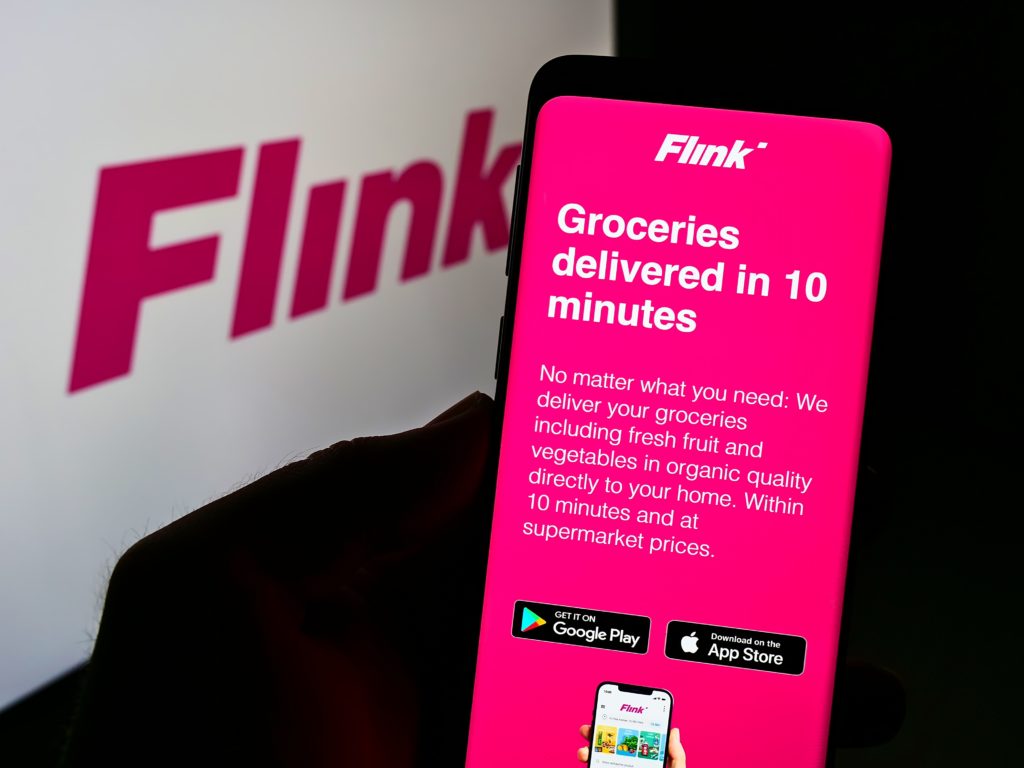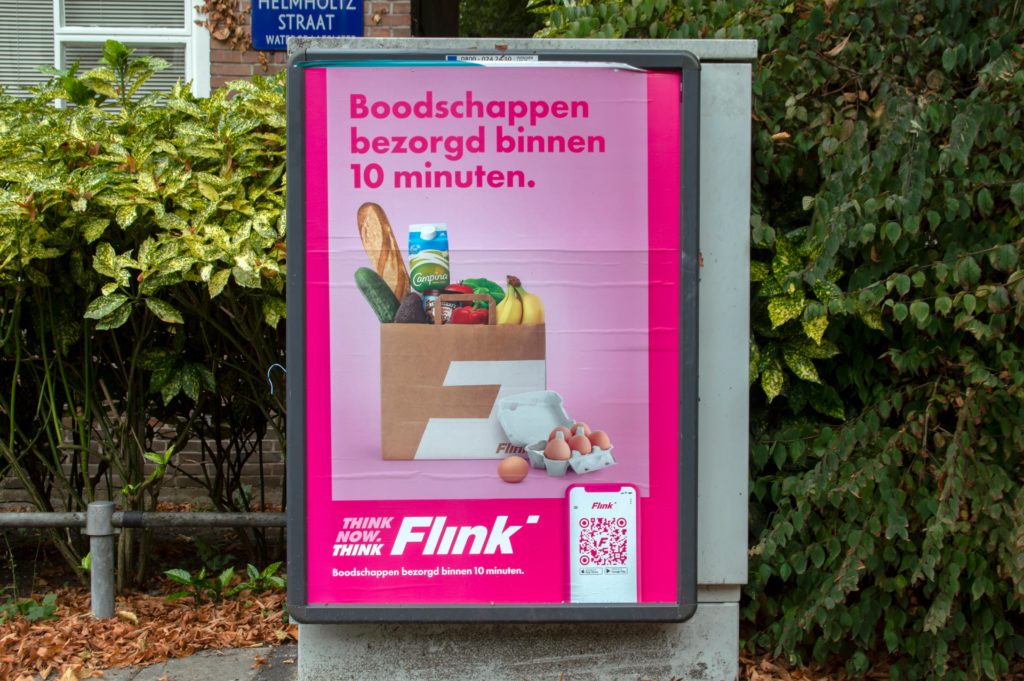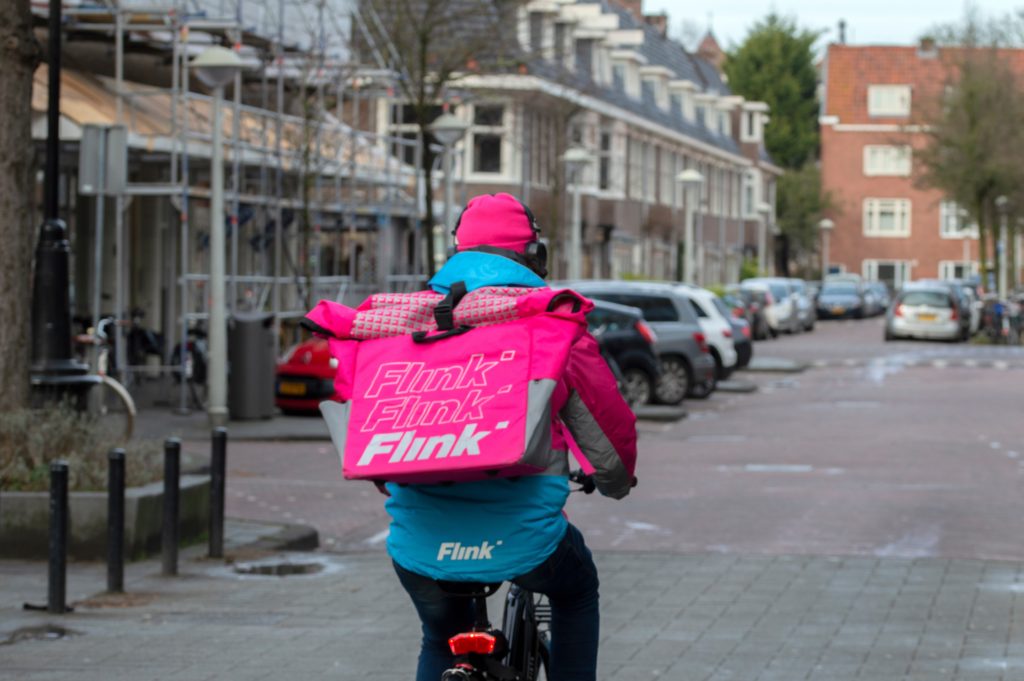
- Products
- Solutions
- Learn
- Partner
- Try Now
Flink business model and how does it work? Customers and investors are both intrigued with the on-demand grocery delivery sector. With just a few clicks on their smartphone, who wouldn’t enjoy having groceries delivered in minutes to their door for a beautiful dinner date?
Let’s explore the journey of how a grocery delivery app like Flink grew overtime, it’s business model, revenue streams, and more:

Flink: The origin
Oliver Merkel (CEO), Christoph Cordes, and Julian Dames founded Flink. Merkel had been leading the consumer products business at the Bain consulting company in Berlin.
Cordes co-founded Foodora and previously worked as CMO at Foodpanda and VP at Delivery Hero. He assisted SoftBank in the development of its companies prior to creating Flink.
Christoph Cordes previously invested six figures in Gorillas, which caught Germany by surprise with its revolutionary delivery model when it began in early 2020.
After persuading Cordes and Dames to join them, they obtained a €10 million first seed round, valuing the firm at €30 million (post-money). They used the funds to begin and then accelerate their launch procedure.
Flink’s team will form a partnership with Hamburg-based delivery app Pickery in late 2020. Pickery’s creators, Saad Saeed and Nikolas Bullwinkel have joined Flink as Directors of Technology and Experience.
Within a month of its inception, Flink was operating in five German cities, including Munich, Berlin, and Cologne. The firm was required to establish physical warehouses as well as source items and drivers.
Flink had expanded to operations in the Netherlands and France within two months of its second round of investment, in March 2021. It grew nearly as rapidly as its main competitor, Gorillas, and entered more cities earlier.

How does Flink work?
Flink is an on-demand food delivery service that allows users to purchase groceries online and have them delivered in as little as 10 minutes.
Flink business model is able to deliver things within 10 minutes since the firm has various warehouses around the locations in which it operates.
After that, a specialized team of warehouse pickers retrieves the products and delivers them to the drivers. The drivers themselves are actually hired by Flink on a full-time basis. Flink even gives them an e-bike to do the delivery.
This is in sharp contrast to delivery platforms such as Deliveroo and Instacart, which recruit drivers on a contract basis. That is, they are only paid when they actually complete an order.
Currently, the service is offered in four European countries: Austria, Germany, France, and the Netherlands.
Here’s how it works: first, you download the software, which is accessible for both Android and iOS smartphones.
After providing your address and payment information, you just choose from the hundreds of things available for purchase.
Flink provides a wide range of products, including fresh meat or fish, pastry items, eggs and milk, alcoholic drinks, snacks, and hundreds more.
Then all you have to do is make your order and wait for it to be delivered. The app allows you to track orders and riders. Payments may be made using a credit card, Apple Pay, or PayPal.
How does Flink make money?
- Through grocery sales
The majority of Flink’s revenue is generated by selling food that it has purchased in bulk and kept. Flink, a grocery delivery app, boosts its profit margins by marginally raising its rates. However, the company’s items are still substantially less expensive than those found in a convenience shop.
Furthermore, through a sourcing agreement with REWE, the company is expected to gain attractive pricing for the items it purchases in bulk. Furthermore, the startup’s distribution service makes use of tiny warehouses that are frequently located in less expensive places.

- Delivery fees
This sort of software can manage paid delivery if the restaurant or grocery store does not have its own delivery staff. Depending on the distance, shipping expenses might be a percentage of the order price or a flat amount.
Want to learn more about a complete delivery solution? Check out Jugnoo.io’s website.
Flink offers a low delivery fee, which is equivalent to €1.80 in Germany, for example. Because there is no minimum purchase size, the company may provide a wide range of services at a cheap cost.
Fees levied by credit card companies (most notably Mastercard and Visa) as a percentage of payment volume to cover interchange fees are also applied.
- Peak hour charges
Peak-hour fees make a lot of sense for delivery services. It’s simply an extra price that certain delivery companies charge during peak periods of the day or week. If an order is going to take a long time to fulfill, it makes sense to place it when there are a lot of drivers available and the demand for deliveries is low.
- In-app advertising
Grocery delivery apps may also generate money through advertising. Flink business model, for example, charges grocery retailers or restaurants a fee to place their adverts at the top of their search results. When you first launch the app, you’ll notice a few sponsored results at the top.
- Sales commission
Commission fees are another method for monetizing food and grocery delivery apps. Online food delivery apps can work with restaurants in exchange for a fixed commission rate based on order size. Just Eat, for example, generates far more money by charging eateries a fee on transactions. The firm now has a market valuation of $3.5 billion and operates effectively in over 15 countries.
As a result, commission rates are a profitable method to earn money and can lead to long-term client connections. However, the amount of the commission might vary based on the quality of the restaurant, the average income, and, of course, other things.

Funding, revenue, and valuation of Flink
As per Crunchbase, Flink has raised a total of $304.2 million in venture capital investment over four rounds.
Target Global, DoorDash, TriplePoint Capital, Northzone, Mubadala Capital, and many others are among the notable investors.
Flink is presently valued at $2.85 billion following its most recent financing, which was initially revealed in December 2021.
Flink, on the other hand, does not publicly reveal how much income it earns. It is possible that it will do so in future funding announcements.
Build your own app like Flink
Ride the new 15-minute grocery delivery trend and deliver groceries faster to your customer’s doorstep. With Jungleworks suite, build your own app like Flink and give your business unparalleled visibility. Book a demo today and take advantage of our ordering, delivery, and growth suite as a one-stop solution for your on-demand grocery delivery business.
Subscribe to stay ahead with the latest updates and entrepreneurial insights!

Subscribe to our newsletter
Get access to the latest industry & product insights.





















